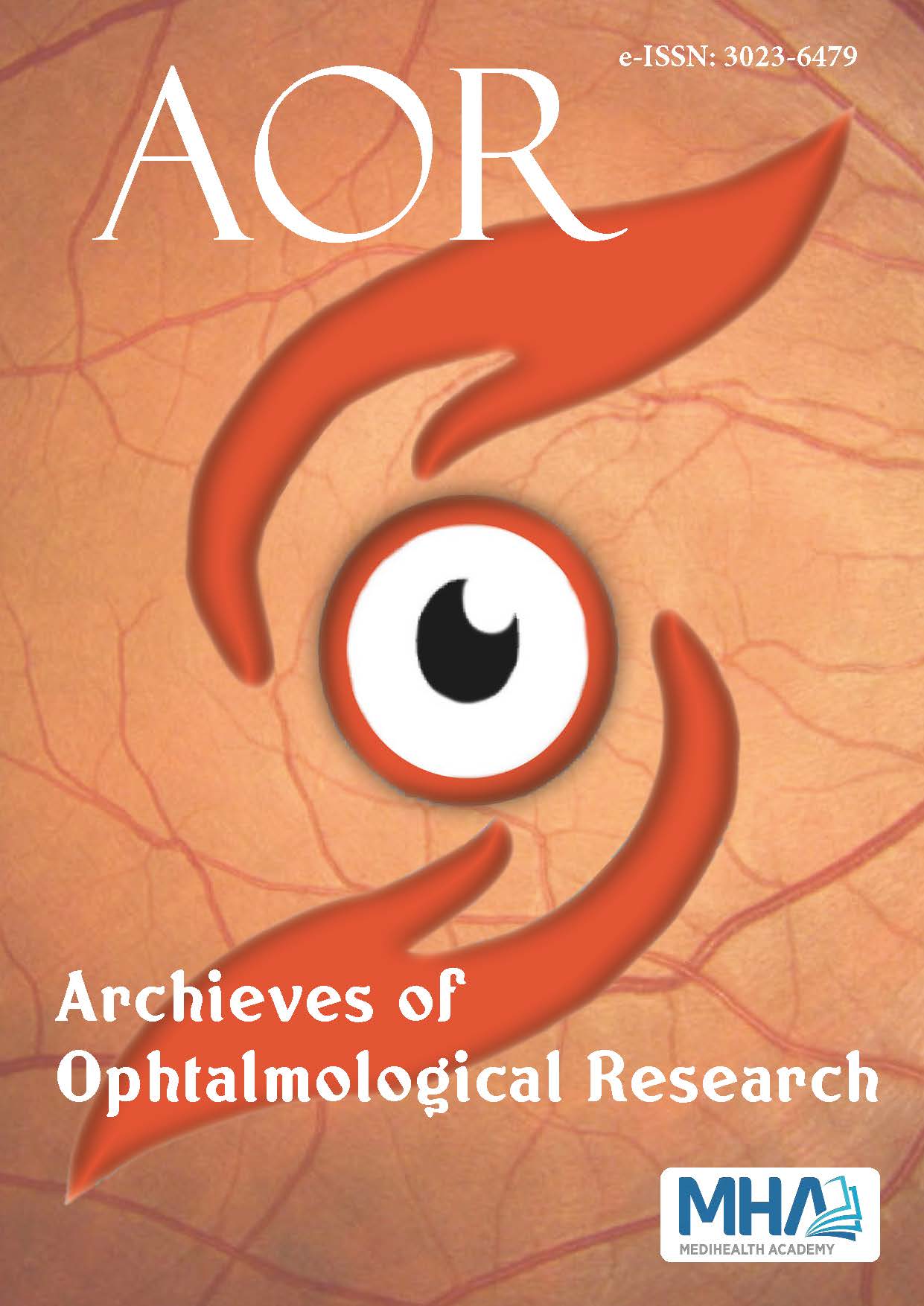1. American Academy of Ophthalmology Basic and Clinical ScienceCourse Subcommittee. Basic and Clinical Science Course. PediatricOphthalmology and Strabismus: Section 6, 2007-2008. San Francisco,CA: American Academy of Ophthalmology;2007:Chapter6.
2. Bagolini B. Sensorial anomalies in strabismus (suppression, anomalousretinal correspondence, amblyopia). Doc Ophthalmol. 1976;41:23.
3. von Noorden GK, Campos EC. Binocular vision and ocular motility. 6thed. Mosby: 2002.
4. Başmak H. Bölüm 33. Şaşılıkta cerrahi tedavi planlaması. Şaşılık. TODYayınları;2008:287-294.
5. Rosenberg M. Society and the adolescent self-image. PrincetonUniversity Pres: 1965.
6. Doğan T. An investigation of the psychometric properties of the socialappearance anxiety scale in an adolescent sample. Elementary EducOnline. 2011;10(1):12-19.
7. Kara A. Shyness with social appearance anxiety examining therelationships between. Individ Society J Soc Sci. 2016;6(11):95-106.
8. Haspolat NK, Kağan M. Body image and self-esteem as predictorvariables of social-phobia. Erzincan Uni J Educ Fac. 2017;19(2):139-152.
9. Dağ İ. Psychological scales used in Turkiye. J Psychiatry PsycholPsychopharmacol. 1993;1(2):23-59.
10. Hatt SR, Lesk DA, Philbrick KL, Holmes JM. Factors associated withfailure of adult strabismus-20 questionnaire scores to improve followingstrabismus surgery. JAMA Ophthalmol. 2018;136(1):46-52.
11. Coats DK, Stager Sr DR, Beauchamp GR, et al. Reasons for delay ofsurgical intervention in adult strabismus. Arch Ophthalmol. 2005;123(4):497-499.
12. Satterfield D, Keltner JL, Morrison TL. Psychosocial aspects ofstrabismus study. Arch Ophthalmol. 1993;111(8):1100-1105.
13. Burke JP, Leach CM, Davis H. Psychosocial implications of strabismussurgery in adults. J Pediatr Ophthalmol Strabismus. 1997;34(3):159-164.
14. Nelson BA, Gunton KB, Lasker JN, Nelson LB, Drohan LA. Thepsychosocial aspects of strabismus in teenagers and adults and theimpact of surgical correction. J AAPOS. 2008;12(1):72-76.
15. Jackson S, Harrad RA, Morris M, Rumsey N. The psychosocial benefitsof corrective surgery for adults with strabismus. Br J Ophthalmol.2006;90(7):883-888.
16. Menon V, Saha J, Tandon R, Mehta M, Khokhar S. Study of thepsychosocial aspects of strabismus. J Pediatr Ophthalmol Strabismus.2002;39(4):203-208.
17. Hatt SR, Leske DA, Kirgis PA, Bradley EA, Holmes JM. Theeffects of strabismus on quality of life in adults. Am J Ophthalmol.2007;144(5):643-647.
18. Astle AT, Foulsham T, McGraw PV. The consequences of strabismus andthe benefits of adult strabismus surgery. Optom Pract. 2016;17(3):121-130.
19. Alpak G, Coskun E, Erbagci I, et al. Effects of corrective surgeryon social phobia, psychological distress, disease-related disabilityand quality of life in adult strabismus patients. Br J Ophthalmol.2014;98(7):876-879.
20. Power B, Murphy M, Stokes J. The impact of strabismus surgery onIrish adults. Br Ir Orthopt J. 2018;14(1):6-10.
21. Nucci P, Kushner BJ, Serafino M, Orzalesi N. A multi disciplinary studyof the ocular, orthopedic, and neurologic causes of abnormal headpostures in children. Am J Ophthalmol. 2005;140(1):65.e1-65.e6
22. Kushner BJ. Binocular field expansion in adults after surgery foresotropia. Arch Ophthalmol. 1994;112(5):639-643.
23. Gill MK, Drummond GT. Indications and outcomes of strabismusrepair in visually mature patients. Can J Ophthalmol. 1997;32(7):436-440.
24. Britt MT, Velez FG, Velez G, Rosenbaum AL. Vertical rectus muscletransposition for bilateral Duane syndrome. J AAPOS. 2005;9(5):416-421.
25. Tukkers van Aalst FS, Rensen CS, de Graaf ME, van Nieuwenhuizen O,Wittebol Post D. Assessment of psychomotor development before andafter strabismus surgery for infantile esotropia. J Pediatr OphthalmolStrabismus. 2007;44(6):350.
26. Rogers GL, Chazan S, Fellows R, Tsou BH. Strabismus surgery and itseffect upon infant development in congenital esotropia. Ophthalmol.1982;89(5):479-483.
27. Hatt SR, Leske DA, Bradley EA, Cole SR, Holmes JM. Development ofa quality-of-life questionnaire for adults with strabismus. Ophthalmol.2009;116(1):139-144.
28. Durnian JM, Owen M, Marsh IB. The psychosocial aspects ofstrabismus; correlation between the AS-20 and DAS59 quality-of-lifequestionnaires. J AAPOS. 2009;13(5):477-480.
29. Leske DA, Hatt SR, Holmes JM. Test-retest reliability of health-related quality-of-life questionnaires in adults with strabismus. Am JOphthalmol. 2010;149(4):672-676.
30. Hatt SR, Leske DA, Bradley EA, Cole SR, Holmes JM. Comparison ofquality-of-life instruments in adults with strabismus. Am J Ophthalmol.2009;148(4):558-562.
31. Jackson S, Morris M, Gleeson K. The long term psychosocial impactof corrective surgery for adults with strabismus. Br J Ophthalmol.2013;97(4):419-422.
32. Hatt SR, Leske DA, Holmes JM. Responsiveness of health relatedquality of life questionnaires in adults undergoing strabismus surgery.Ophthalmol. 2010;117(12):2322-2328.
33. Beauchamp GR, Black BC, Coats DK, et al. The management ofstrabismus in adults - III. the effects on disability. J AAPOS. 2005;9(5):455-459.
34. Dickmann A, Aliberti S, Rebecchi MT, et al. Improved sensory statusand quality of life measures in adult patients after strabismus surgery. JAAPOS. 2013;17(1):25-28.
35. Hatt SR, Leske DA, Liebermann L, Holmes JM. Changes in health-related quality of life 1 year following strabismus surgery. Am JOphthalmol. 2012;153(4):614-619.

